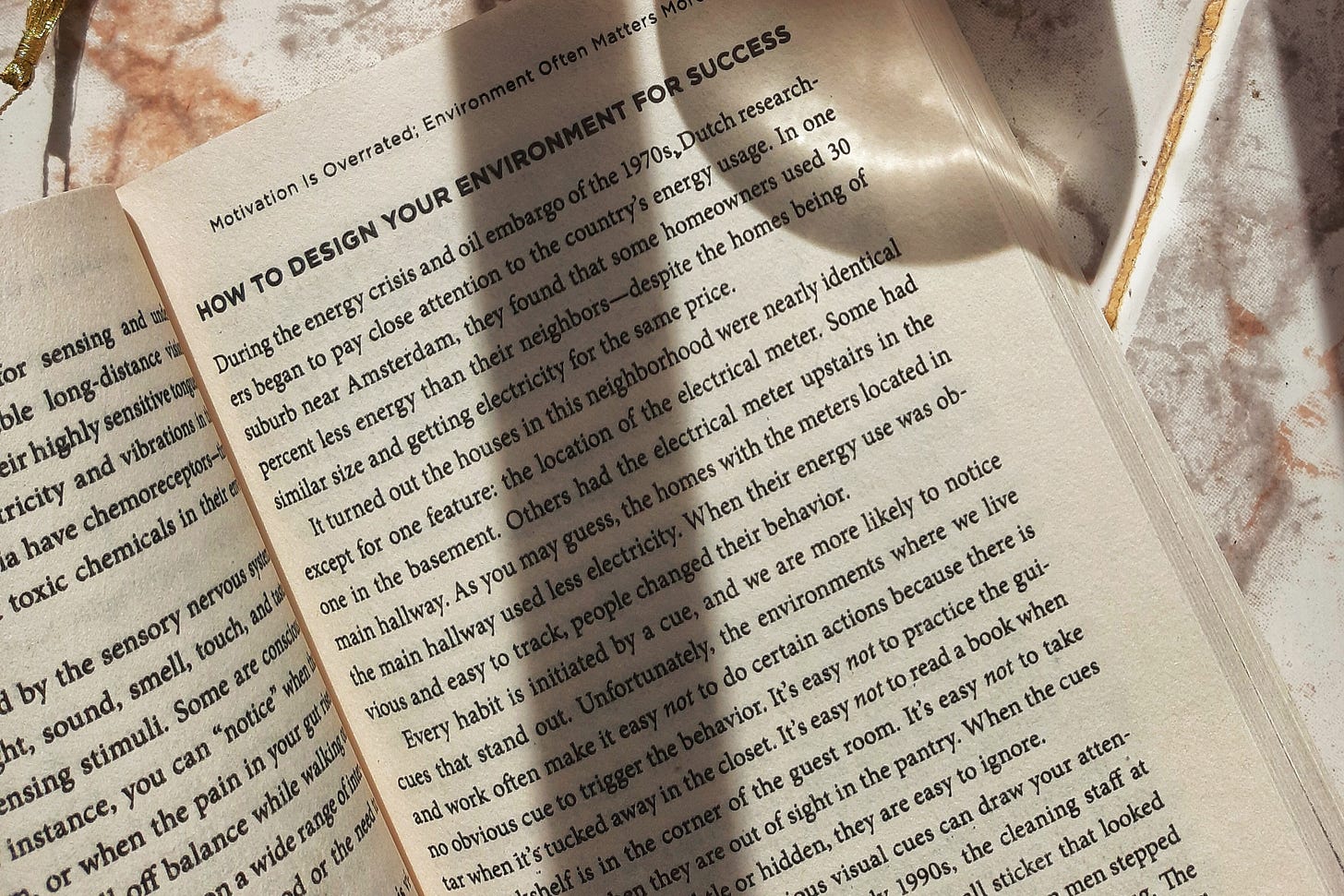The Surprisingly Simple Science of Habit Building
We are what we repeatedly do. Excellence, then, is not an act but a habit. - Aristotle
In this week’s newsletter we tackle a topic that everyone knows is important and understands the value of, but fails to connect all the dots to make it effortless. Habits.
This framework is pulled from James Clear’s book Atomic Habits, which is itself, a great distillation of other research surrounding habit formation.
The 4 Laws Of Behaviour Change
All habits can be broken down into 4 stages. Understanding these 4 stages and how to modify them is the only information required to create better habits.
They are Cue, Craving, Response and Reward.
Make it Obvious (or invisible)
The first step of any habit is the cue, the trigger that tells your brain to engage autopilot.
Most cues are visual. Out of ~11,000,000 sensory receptors in the body, over 10,000,000 are related to visual stimulation.
If we want to remind ourselves to do something the best way to do so is make it visually obvious. This is why “out of sight out of mind” is such a common idiom.
Want to eat more fruit? Buy a fruit bowl.
Make bad habits less likely by eliminating the cues from view.
Spend too much time on your phone? Keep it in another room.
As I’m sure you can already tell, I’m not sharing any groundbreaking information, just a simple framework for action!
Make it Attractive (or unattractive)
The second stage is craving. This is the motivational force behind every habit. Cravings are the problem that habits solve.
We can influence our cravings by making good habits attractive and bad habits unattractive.
Attractive: You’re only allowed to listen to your favourite audiobooks when working out.
Unattractive: Schedule breakfast with a friend early on a Sunday to make partying on Saturday night feel unattractive.
Make it Easy (or impossible)
The third stage is the response, which is the actual habit you perform.
We can foster good habits by making them easier to perform. Usually by lowering the number of steps needed to take a desired action.
Trying to floss regularly? Place it next to your toothbrush, not in the bottom drawer.
We can cut off bad habits by making it (nearly) impossible to complete them.
It’s a lot harder to eat dessert every night if you leave the cookies at the grocery store.
Make it Satisfying (or frustrating)
The fourth stage is the reward, which is the feedback your brain receives for completing the habit.
What is immediately rewarded is repeated, and what is immediately punished is avoided.
You can make a good habit more satisfying by adding a small immediate reward after completing it.
You can make a bad habit frustrating by adding a negative consequence immediately after completing it.
The best method for this is an accountability partner. Having to tell them you’ve engaged in a poor behaviour is often enough to dissuade you in the first place.
The beauty of this framework is that it can be used for any habit you want to form or break.
The Refinery
This is a new section I’ll be adding to the end of each newsletter moving forward. It will include bonus content or tools related to the newsletter for those who wish to take a deeper dive into the topic.
Tiny Habits by BJ Fogg, founder of the behaviour design lab at Stanford University
Identity Based Habits, why identity change is the North Star of habit change
Atomic Habits on Blinkist, this is one of my favourite apps that summarizes non-fiction books into 15 minute reads or listens and captures all the key takeaways
Tools of Titans by Tim Ferris, The Tactics, Routines, and Habits of Billionaires, Icons, and World-Class Performers


